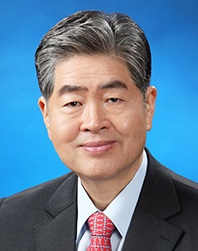- Daesung News
- Read the latest news featuring Daesung Group
| Title | [The Korea Times] Prospects for Northeast Asian energy community | 2018.09.21 |
|---|---|---|
|
FROM: The Korea Times [The Korea Times - September. 21, 2018]
Prospects for Northeast Asian energy community
By Younghoon David Kim
With three inter-Korean summits this year and the possibility that North Korea may denuclearize and come out of the cold, political leaders and energy experts in Seoul and Moscow are blowing the dust off an old plan to build a natural gas pipeline from Vladivostok to the Demilitarized Zone (DMZ).
Indeed, President Moon Jae-in and Russian President Vladimir Putin have already agreed to start joint feasibility studies.
The flow of Russian gas overland through North Korea to South Korea could be a flagship project of inter-Korean cooperation. But it could also be even more significant. It is possible the pipeline could represent the first small step towards eventual regional East Asian economic integration.
The argument for that conclusion is quite simple. Until now, this project has not gone ahead because of politics.
When it came up a generation ago following the state visit of then President Kim Dae-jung to Russia, the government of North Korea at that time could not ideologically justify welcoming outside experts to visit North Korea for a feasibility study on its territory and the pipeline died a natural death.
But times are changing. If the age of ideological confrontation on the Korean Peninsula is ending, as we hope it is, all players will be motivated by their respective national self-interest.
What are those interests? Consider first the three main players ŌĆĢ Russia, and North and South Korea.
Russia wants the pipeline because it is looking to diversify its gas markets from Europe to Asia. It aims by 2030 to be selling 25 percent of its natural gas to Asia.
South Korea takes 1.5 million tons of Sakhalin gas a year now and this could increase to 7 million with a pipeline. This will allow Seoul to reduce dependency on current suppliers. Another attraction is that piped gas is cheaper than LNG, which has to be liquefied, shipped and then re-gasified at importing terminals.
As for North Korea, once the pipeline is built, it would be able to charge transit fees. These could be around $150 million a year.
Consider also the interests of the other concerned regional powers.
They, too, could benefit, albeit less directly. It is possible, for example, that Japan might be interested in an extension of the pipeline, from Busan under the sea to Kyushu and even to Honshu.
China is looking for energy security. It now gets its gas from Turkmenistan to the west and Siberia to the north. Were the trans-Korean pipeline to be extended under the sea to China, it would receive gas from the east, so to speak.
That all said, there is another issue in the way and that is the geopolitical standoff between the United States and Russia. Contrary to the general assumption that the gas pipeline will proceed as soon as the relationship between North and South Korea improves, based on a reliable denuclearization scheme, the U.S. still might be unhappy because the project would raise Russia's political and economic clout in the Far East.
On the plus side, it is possible the U.S. could benefit economically, if it were able to ship gas from Alaska to Korea's east coast and feed it into the East Asian loop of the gas network. But, clearly, the political aspect of the U.S.-Russia relationship is a consideration.
It is possible that the parties involved may iron out the various issues and practical considerations at the next World Energy Congress.
The triennial event of the World Energy Congress is being held next in Abu Dhabi in 2019. Besides North Korea, the concerned countries are active members of the organization. (North Korea was a member and is now expressing interest in rejoining).
As an interesting historical note, the World Energy Council, which is a non-political and non-commercial global forum, was originally formed to rebuild the electricity grid in Europe after World War I. Three decades later, in 1951, the European Coal and Steel Community was established and it later evolved into today's European Union.
In a similar way, with the right leadership, the cooperation and investment required to create the infrastructure to feed gas into the grids of China, Japan and South Korea, with add-ins from the United States, could form the basis for East Asian economic integration that would eventually reshape our region.
Younghoon David Kim is the chairman of the London-based World Energy Council and chairman and CEO of the Daesung Group. |
||
| NO | Title | Date |
|---|---|---|
| 252 | [Korea Joongang Daily] Solutions wa... | 2019.06.20 |
| 251 | [The Korea Times] Has Fourth Indust... | 2019.05.10 |
| 250 | [World Energy News] Russian Pipelin... | 2019.05.03 |
| 249 | [The Korea Times] Appropriate techn... | 2019.04.18 |
| 248 | [The Korea Times] Prospects for Nor... | 2018.09.21 |






